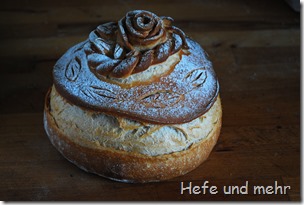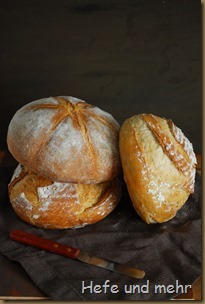 How to start baking bread? I remember that I started with searching for a recipe and just simple following the instruction. I can’t tell you anymore which recipe it was (it was before I started blogging) but I knew that it was far away from being perfect. But I already cached the bread baking virus.
How to start baking bread? I remember that I started with searching for a recipe and just simple following the instruction. I can’t tell you anymore which recipe it was (it was before I started blogging) but I knew that it was far away from being perfect. But I already cached the bread baking virus.
Every now and then readers and friends asked me which of my recipes they should use for their first bread. I send Friends and colleagues, which I can provide with sourdough, directly to my favourite wheat and rye bread, which has an easy to handle dough. But giving sourdough to readers is not as easy and so I developed another recipe.
It is made with Pâte Fermentée as preferment. It is a preferment which did not need a lot of care. You mix it, you put it in the fridge, you wait for at least twelve hours. No fussing about the right temperature or the need of using it while on its peak.
The dough is easy to handle and instead of scoring the loaf, you can press it down with the handle of a wooden spoon, which creates the niece pattern on the loaf on top of the pile. But it is a bread which is great for experienced bakers as well. I used it with great success for making loaves decorated with roses for the 90. birthday of my boyfriends grandmother.
And at the end it tastes great, as well. It has a soft, fluffy crumb under a crisp crust. It has a mild aroma with complex flavour profile due to the preferment.
Continue reading →

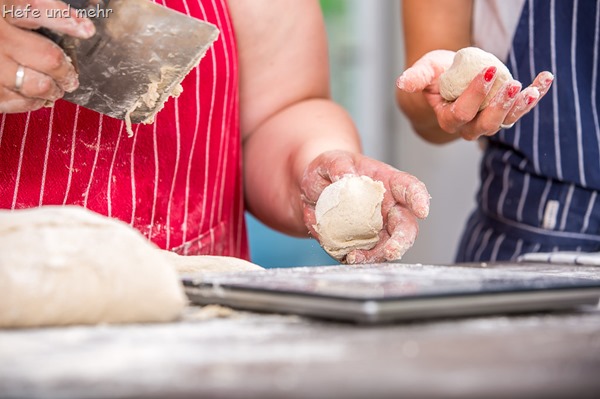
 Some days ago I had to sent some sourdough per mail. That is easy when the sourdough is mixed with a lot of flour to form dry crumbs – the German name for this is “Krümmelsauer” while it is called “Gerstl” in Austria. The crumbs should be as dry and fine as possible. This reduce the amount of water and put the microorganisms to hibernation. In this state there is nearly no fermentation going on.
Some days ago I had to sent some sourdough per mail. That is easy when the sourdough is mixed with a lot of flour to form dry crumbs – the German name for this is “Krümmelsauer” while it is called “Gerstl” in Austria. The crumbs should be as dry and fine as possible. This reduce the amount of water and put the microorganisms to hibernation. In this state there is nearly no fermentation going on.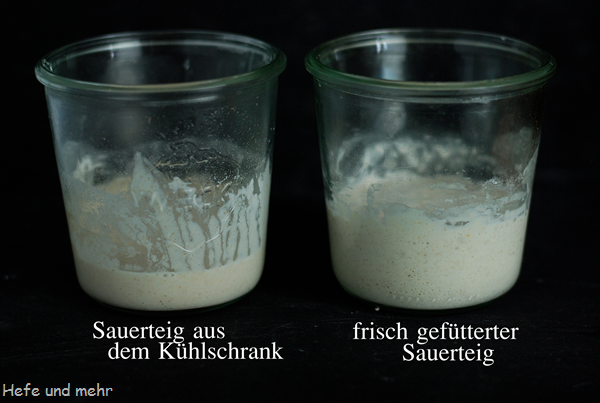 Now we feeded our new sourdough for for four or five days and it is happy bubbeling. But how to proceed now? Here is an overview on how to care for a sourdough:
Now we feeded our new sourdough for for four or five days and it is happy bubbeling. But how to proceed now? Here is an overview on how to care for a sourdough: 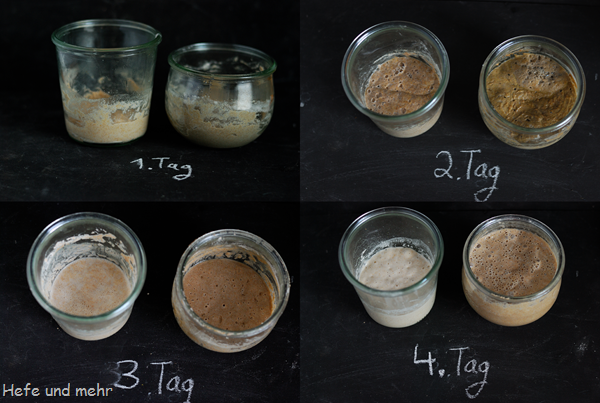
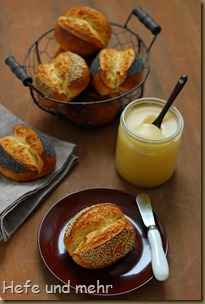 To me, the basic of good breakfast is a good roll. And so we are baking rolls in part three of our little bread baking course. These rolls are looking more complicated then they. For shaping we will use the same method then for the bread we baked last time. And already after 15 minutes the rolls are deeply cut, which is much easier than cutting a fully proofed roll. The cut is carefully laid together and will open beautiful during baking.
To me, the basic of good breakfast is a good roll. And so we are baking rolls in part three of our little bread baking course. These rolls are looking more complicated then they. For shaping we will use the same method then for the bread we baked last time. And already after 15 minutes the rolls are deeply cut, which is much easier than cutting a fully proofed roll. The cut is carefully laid together and will open beautiful during baking.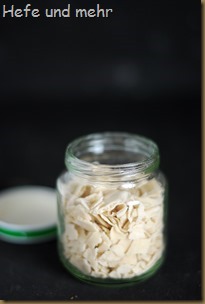
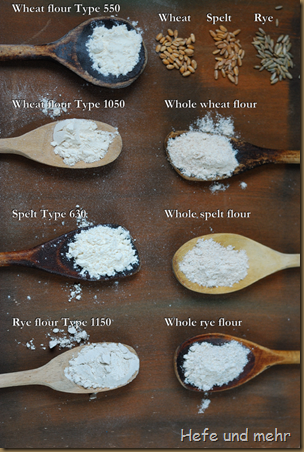 Flour is essential for baking bread. But if you start to compare international flours you will fast realize that the flour types in one country are not easily to translate into flour types of another country. There is no international standard to make flour comparable. And that’s why
Flour is essential for baking bread. But if you start to compare international flours you will fast realize that the flour types in one country are not easily to translate into flour types of another country. There is no international standard to make flour comparable. And that’s why  How to start baking bread? I remember that I started with searching for a recipe and just simple following the instruction. I can’t tell you anymore which recipe it was (it was before I started blogging) but I knew that it was far away from being perfect. But I already cached the bread baking virus.
How to start baking bread? I remember that I started with searching for a recipe and just simple following the instruction. I can’t tell you anymore which recipe it was (it was before I started blogging) but I knew that it was far away from being perfect. But I already cached the bread baking virus.